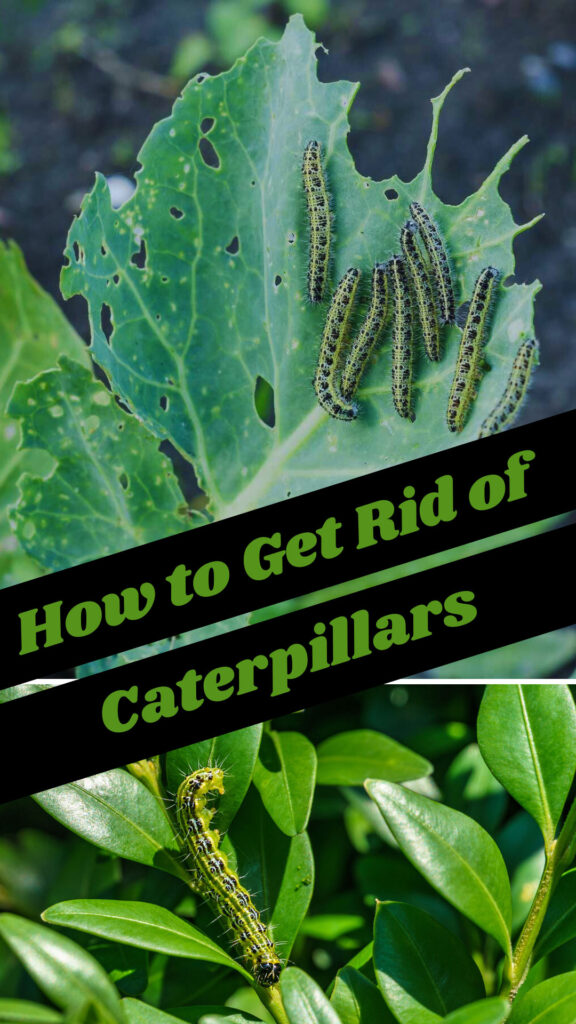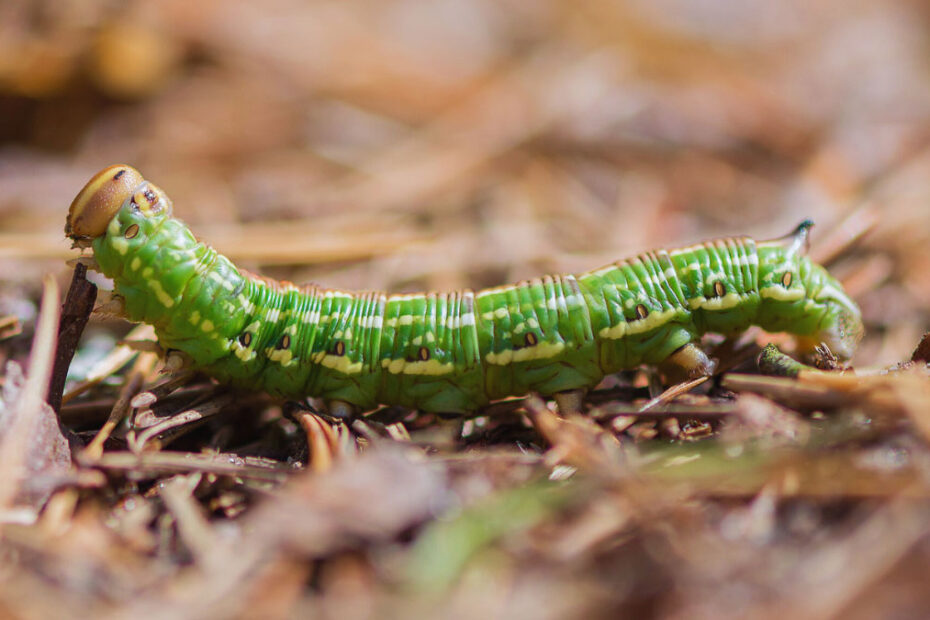Caterpillars might look harmless, but they can wreak havoc on your garden, munching through leaves and damaging plants. If you’re tired of finding your hard work devoured by these hungry pests, it’s time to take action. Understanding the best methods to get rid of caterpillars will help you protect your garden without causing harm to the environment.
In this guide, you’ll discover effective, eco-friendly strategies to keep caterpillars at bay. From natural predators to homemade remedies, you’ll find the right solution to maintain a healthy, thriving garden. Let’s jump into practical tips that will help you reclaim your green space and enjoy a caterpillar-free garden.
Key Takeaways
- Identify Caterpillar Infestations Early: Recognize signs such as holes in leaves, frass, silk webbing, and visible caterpillars to manage infestations promptly.
- Employ Natural Methods: Utilize eco-friendly strategies such as handpicking caterpillars, introducing natural predators, and applying homemade sprays like garlic, neem oil, and pepper.
- Safely Use Chemical Solutions: Choose pesticides with active ingredients like Bacillus thuringiensis (Bt) or spinosad, and follow safety precautions to minimize environmental impact.
- Implement Preventative Measures: Plant caterpillar-resistant plants such as marigolds, lavender, basil, and thyme, and maintain garden hygiene by removing debris, pruning, weeding, and inspecting plants regularly.
- Seek Professional Help When Necessary: If you encounter severe, persistent, or large-scale infestations, or hard-to-identify species and health risks, contact experts for effective and safe management solutions.

Identifying Caterpillar Infestations
Spotting a caterpillar infestation early is crucial to prevent severe damage to your garden. Knowing the signs and types of caterpillars can help you take prompt action.
Common Signs of Caterpillar Presence
Look for these indicators to identify caterpillar infestations:
- Holes in Leaves: Caterpillars chew irregular holes in leaves. Check the foliage closely.
- Frass (Caterpillar Droppings): Small, pellet-like droppings near plants suggest caterpillar activity.
- Silk Webbing: Some caterpillars, like tent caterpillars, leave webbing on branches and leaves.
- Defoliation: Severe infestations can strip plants of leaves. Monitor plant coverage.
- Visible Caterpillars: Spotting caterpillars on plants is a clear sign of infestation.
Types of Caterpillars to Watch For
Certain types of caterpillars are more common and damaging:
- Tomato Hornworms: Large green caterpillars that can devastate tomato plants.
- Cabbage Loopers: Green caterpillars affecting cabbage, broccoli, and related crops.
- Tent Caterpillars: Brownish caterpillars forming silk tents in trees.
- Gypsy Moths: Caterpillars with distinctive blue and red spots affecting oaks and other trees.
- Armyworms: Green or brown caterpillars feeding on a wide range of plants.
Identifying these common signs and types of caterpillars helps you manage infestations effectively, keeping your garden healthy.
Natural Methods to Get Rid of Caterpillars
To effectively manage caterpillar infestations in your garden while preserving the environment, consider implementing natural methods. These approaches are both effective and eco-friendly.
Handpicking Caterpillars
Handpicking caterpillars off your plants is straightforward and doesn’t require chemicals.
- Inspect plants regularly: Look for holes in leaves, frass, and silk webbing.
- Remove caterpillars: Wear gloves, then pick caterpillars off leaves and stems.
- Dispose of caterpillars: Place them in soapy water to ensure they don’t return.
Using Natural Predators
Introducing natural predators can help control caterpillar populations.
- Ladybugs: These insects eat caterpillar eggs, reducing the number of caterpillars before they hatch.
- Birds: Attract birds, such as chickadees and sparrows, by installing bird feeders and baths.
- Parasitic Wasps: These wasps lay eggs in caterpillars, eventually killing them.
Homemade Caterpillar Sprays
Homemade sprays target caterpillars without harming beneficial insects.
- Garlic Spray: Blend 2 cloves of garlic with water, strain, and spray on plants.
- Neem Oil: Mix neem oil with water and a few drops of dish soap, then apply to leaves.
- Pepper Spray: Combine hot peppers and water, blend, strain, and spray affected areas.
Using these methods ensures you can manage caterpillars while protecting your plants and the environment.
Chemical Solutions
Chemical solutions provide a swift answer to caterpillar infestations. While effective, they must be used carefully to minimize environmental impact and ensure safety.
Selecting the Right Pesticide
Choosing appropriate pesticides ensures effective caterpillar control. Here are key factors to consider:
Active Ingredients: Check for chemicals like Bacillus thuringiensis (Bt) or spinosad, which specifically target caterpillars.
Effectiveness: Look for pesticides marked for caterpillar control. Read reviews or consult with gardening experts.
Environmental Impact: Opt for eco-friendly pesticides. Products with low toxicity help preserve beneficial insects.
Application Method: Some pesticides come as sprays, while others are powders. Choose based on ease of application and your garden’s requirements.
Safety Precautions When Using Chemicals
Using chemicals safely protects you, your family, and your garden. Follow these steps:
Read Labels: Always read and follow the manufacturer’s instructions.
Wear Protective Gear: Use gloves, masks, and eye protection to prevent contact with chemicals.
Apply Carefully: Avoid applying pesticides on windy days to prevent drift to non-target areas.
Store Properly: Keep chemicals out of reach of children and pets. Store them in a cool, dry place.
Following these guidelines ensures that chemical solutions can effectively manage caterpillar infestations while maintaining safety and environmental health.
Preventative Measures
To keep your garden free from caterpillars, consider implementing preventative measures. These steps will reduce the chances of infestations, save time, and help maintain a healthy garden.
Planting Caterpillar-Resistant Plants
Choosing the right plants can make a significant difference in deterring caterpillars:
- Marigolds: Their scent repels many pests.
- Lavender: Known for discouraging moths and butterfly species.
- Basil: A powerful herb that repels various caterpillar types.
- Thyme: Acts as a deterrent against cabbage moths and loopers.
When planting, diversify your garden to minimize the risk of large-scale infestations. A mix of resistant plants creates a natural barrier against caterpillars.
Maintaining Garden Hygiene
A clean garden is less inviting to caterpillars. Regular maintenance practices can keep these pests at bay:
- Remove Debris: Clean up fallen leaves and plant material as they can harbor caterpillar eggs.
- Prune Regularly: Trim plants to promote airflow and reduce hiding spots for caterpillars.
- Weed Frequently: Weeds can attract pests that caterpillars feed on.
- Inspect Plants: Check leaves and stems for signs of eggs or larvae frequently.
Adopt a routine inspection schedule to catch early signs of infestations. Quick intervention prevents caterpillars from establishing a foothold in your garden.
By planting caterpillar-resistant plants and maintaining garden hygiene, you’ll create a less hospitable environment for these pests and protect your garden’s health.
When to Seek Professional Help
You might need professional help if natural and chemical methods don’t control the caterpillar infestation. Recognizing the signs that it’s time to contact an expert can save your garden and prevent further damage.
Severe Damage
Professional intervention becomes crucial when caterpillars cause extensive damage to your plants. You’ll notice large portions of foliage missing, stems stripped bare, and overall plant health declining rapidly. If close monitoring reveals no improvement or worsening conditions even though your efforts, expert evaluation can provide solutions.
Hard-to-Identify Species
Some caterpillar species are difficult to identify, making it hard to find effective treatment methods. Professional pest control services can identify these specific caterpillars using specialized knowledge and tools. This ensures tailored solutions for your particular infestation, leading to more effective results.
Persistent Infestations
If caterpillars keep returning even though using eco-friendly and chemical remedies, it indicates a persistent problem that needs professional help. Experts can offer comprehensive strategies that address the root cause, preventing future infestations. This might include in-depth inspections, habitat modifications, and advanced treatment options.
Large-Scale Infestations
For large gardens or commercial landscapes, caterpillar infestations can spread quickly and become unmanageable. Professional services have the resources and manpower to handle large-scale problems efficiently. This ensures your entire garden or world is treated thoroughly and uniformly.
Health and Safety Concerns
Some caterpillars can pose health risks to humans and pets. For example, the hairs or spines of certain species can cause allergic reactions or skin irritations. If you encounter such health and safety concerns, professionals know how to handle these caterpillars safely, ensuring your well-being.
- Monitor for severe damage: Look for missing foliage, stripped stems, and declining plant health.
- Identify hard-to-spot species: Note if specific caterpillars are difficult to identify.
- Address persistent issues: Observe if infestations return even though treatments.
- Manage large areas: Consider the scale of your garden or world.
- Ensure safety: Be aware of any health risks from caterpillars.
Professional help provides long-term and efficient solutions, ensuring your garden remains healthy and caterpillar-free.
Conclusion
Tackling caterpillar infestations in your garden doesn’t have to be overwhelming. By identifying early signs and using eco-friendly methods, you can effectively manage these pests while protecting your plants and the environment. Whether you choose natural predators, homemade sprays, or chemical solutions, always prioritize safety and sustainability. Remember, maintaining garden hygiene and planting resistant varieties can prevent future infestations. If the problem persists or becomes unmanageable, don’t hesitate to seek professional help. With the right approach, you can enjoy a thriving, caterpillar-free garden.
Frequently Asked Questions
How can I identify caterpillar infestations in my garden?
Look for common signs such as holes in leaves, caterpillar droppings (frass), silk webbing, defoliation, and visible caterpillars. Identifying these early helps in managing infestations effectively.
What are some common types of caterpillars to watch for?
Common types include tomato hornworms, cabbage loopers, tent caterpillars, gypsy moths, and armyworms. Recognizing these can help you take targeted action against them.
How can I manage caterpillar infestations naturally?
Natural methods include handpicking caterpillars, using natural predators like ladybugs and birds, and applying homemade sprays such as garlic spray, neem oil, and pepper spray.
Are there eco-friendly strategies to control caterpillars?
Yes, eco-friendly strategies involve using natural predators, homemade sprays, and creating a garden environment less hospitable to caterpillars without harming beneficial insects or the environment.
What should I consider when choosing chemical solutions for caterpillar control?
Check for active ingredients like Bacillus thuringiensis (Bt) or spinosad, ensure the chemical’s effectiveness, consider environmental impact, and choose an appropriate application method. Always follow safety precautions.
How do I use chemicals safely to control caterpillars?
Read labels carefully, wear protective gear, apply chemicals cautiously, and store them properly. Following these guidelines helps minimize environmental impact and ensures safety.
What preventive measures can I take to keep my garden caterpillar-free?
Plant caterpillar-resistant plants such as marigolds, lavender, basil, and thyme. Maintain garden hygiene by removing debris, pruning plants, weeding frequently, and inspecting plants regularly.
When should I seek professional help for caterpillar infestations?
Seek professional help if you notice severe plant damage, difficulty in identifying caterpillar species, persistent infestations despite treatments, large-scale infestations, or if there are health and safety concerns.
What role do natural predators play in managing caterpillar populations?
Natural predators like ladybugs, birds, and parasitic wasps help control caterpillar populations by preying on them, which reduces the need for chemical interventions and maintains ecological balance.
